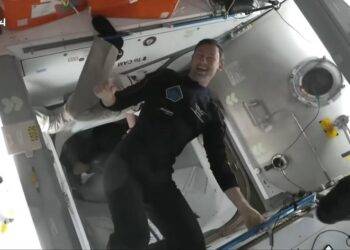As the floodwaters from the Odra River continue their relentless advance, the town of Głogów and surrounding areas are engaged in a life-or-death battle to prevent widespread devastation. The surge, which has seen water levels peak at 685 centimeters, poses an immediate threat to communities struggling to maintain strained levees and fight the rising backflow from nearby rivers. Authorities and emergency workers are bracing for what they describe as a critical 48-hour period, during which the integrity of local flood defenses will be tested.
Levees at Breaking Point
The Odra River’s flood surge has been steadily making its way from Lower Silesia, moving downstream towards Lubusz Voivodeship. In Głogów, located in the Lower Silesian region, the situation remains precarious. At 17:00 on Sunday, the river stood at a dangerous 685 cm, just a few centimeters below earlier levels recorded at 689 cm. Despite the slight decrease, Głogów’s mayor, Rafael Rokaszewicz, emphasized the ongoing threat.
“Everything is still very serious,” said Rokaszewicz in an interview with Polsat News reporter Katarzyna Janke. The mayor noted that the town’s Ostrów Tumski district, a critical location, was of particular concern. Emergency crews, including firefighters and soldiers from the Territorial Defense Forces, have been working tirelessly to repair weakened sections of the levees. “We just had an operation to patch up a leaking levee. The situation is dire,” added Rokaszewicz.
The peak flood wave on the Odra River will pass through Głogów from Sunday night to.
— Poland-24.com (@poland24com) September 21, 2024
With 208 square kilometers at risk, water levels have reached 654 cm and are expected to rise to 7 meters.
The levees, at 7.15-7.20 meters, may overflow.#powódź #powodź2024 pic.twitter.com/fYui5hmNLP
Several rural municipalities surrounding Głogów, which have kilometers of open levees, are in even more dangerous positions. Years of underinvestment have left these flood defenses vulnerable, and now, with record-high water levels, the levees are at significant risk of collapse. “We are fighting for everything,” said Rokaszewicz. “These levees have not seen proper upgrades in decades.”
Volunteers and Emergency Services Mobilized
The local response to the flooding has seen coordinated efforts from various groups, including local residents, the fire brigade, and military personnel. Volunteers have been filling sandbags, reinforcing flood barriers, and evacuating those most at risk. In Głogów itself, streets are flooded, and water is rising through the town’s drainage system, putting additional strain on flood pumps.
At one of the town’s most vulnerable points, near Ostrów Tumski, firefighters have been working to pump out water from overflowing sewage systems. With floodwaters seeping into storm drains, the risk of further inundation looms large. The battle against the rising water has been described as a race against time, with the next two days expected to be critical. “The surge will decrease slightly, but the water will remain high for two days. That is an enormous risk for the levees and their structural integrity,” said the mayor.
Backflow from Czarna River Inundates Homes
Compounding the danger is the backflow from the Czarna River, a smaller waterway that feeds into the Odra. The backflow has already flooded several homes in Głogów, particularly in the Nosocice district, where floodwaters reached several properties on Osadników Street. The situation on the Czarna River has become the most immediate concern for many residents, as water levels continue to rise from the backflow effect.
“The most difficult situation is not on the Odra itself, but on the Czarna River,” explained Rokaszewicz. “The backflow has flooded several houses. Despite our preparations — delivering sand and bags to residents and setting up evacuation zones — the water still managed to reach certain areas.”
Residents affected by the flooding have been evacuated to safer locations, while emergency shelters have been set up for those displaced. In the lead-up to the surge, authorities provided sandbags and coordinated evacuation plans, but for some areas, the defenses proved insufficient. Local officials are continuing to monitor the situation closely, hoping to prevent further damage as they await the passing of the flood peak.
Long-term Solutions Needed
While immediate efforts are focused on crisis management, officials are beginning to discuss the long-term implications of the flood and what needs to be done to prevent future disasters. Mayor Rokaszewicz and other local leaders have pointed out that decades of neglect have left the region’s flood defenses in a critical state of disrepair. The need for substantial investment in levee reinforcement and flood infrastructure has never been more apparent.
“We have reached a point where emergency measures are no longer enough,” said Rokaszewicz. “These levees should have been upgraded years ago. Now, we are paying the price for those delays.”
As the floodwaters continue their slow retreat over the coming days, local authorities will be assessing the damage and determining the scale of recovery needed. But for now, the focus remains on holding back the water and protecting as many homes as possible. With lives and livelihoods at stake, the fight against the flood surge in Głogów is far from over.

















